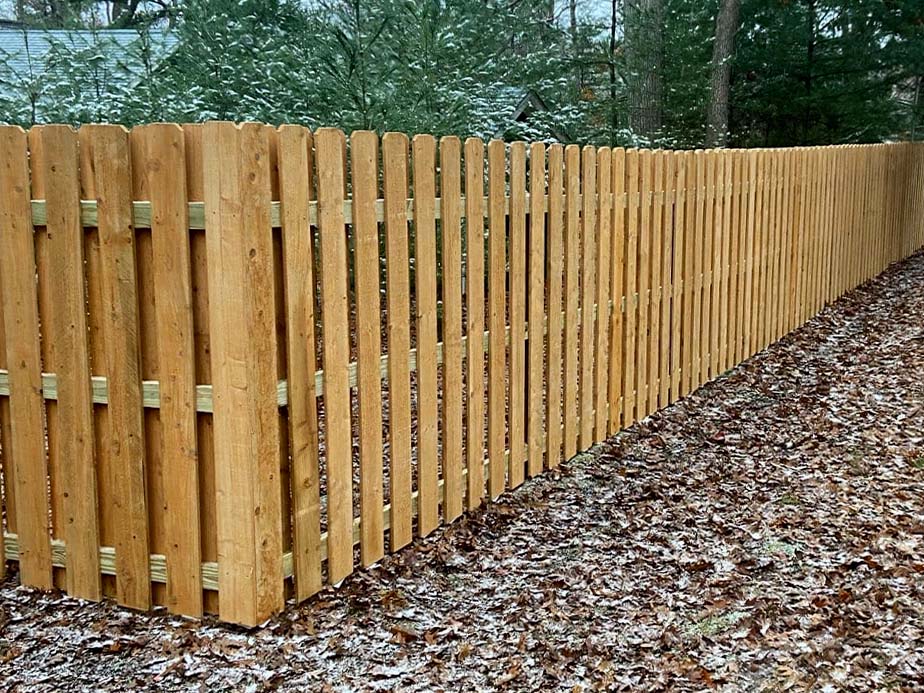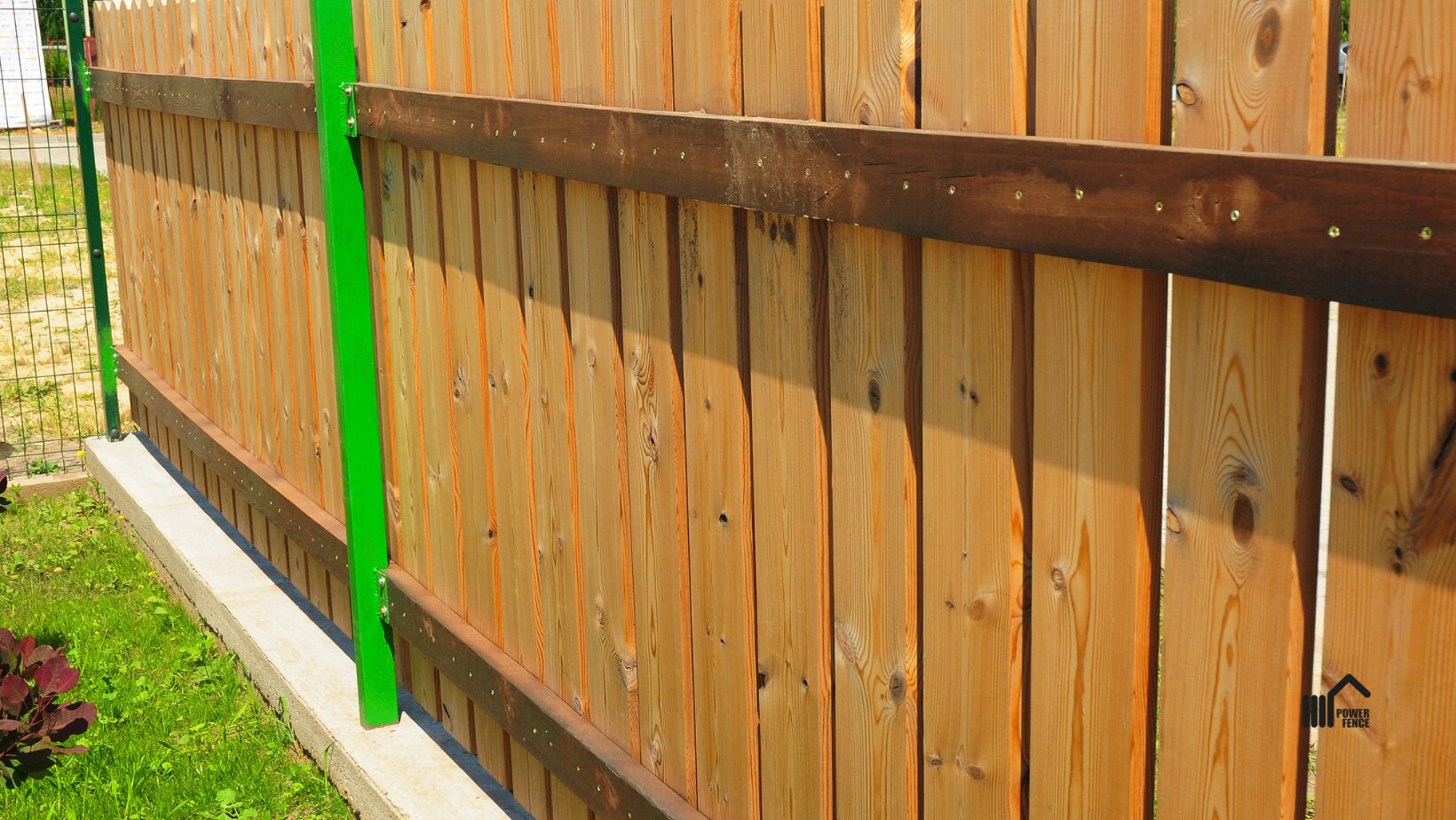Long-Term Solutions for Durable Fence Repair
Long-Term Solutions for Durable Fence Repair
Blog Article
Just How to Determine Typical Concerns That Require Immediate Fencing Fixing
It is essential to identify issues before they end up being larger problems when it comes to keeping your fence. Frequently checking for signs of deteriorating timber, leaning panels, or corrosion can conserve you money and time in the long run. You might not realize just how weather condition and parasites can jeopardize your fencing's integrity. Allow's check out the usual indications that suggest your fencing needs prompt interest, so you can keep your home secure and looking its best.
Indicators of Rotting Wood in Wooden Fences
Have you seen your wooden fencing looking a little bit worse for wear? If so, it could be time to inspect for signs of deteriorating wood. Take a look at the base of the posts and panels for soft spots. That's a clear indication of rot if you press on the wood and it really feels spongy or collapses. Next off, look for discoloration or dark areas on the timber-- these typically signal moisture damages. Focus on any type of peeling off paint or coating, as this can expose the wood to additional decay. Additionally, a poignant, mildewy smell can suggest fungal development. Don't neglect to inspect joints and connections; if they hang or crumbling, the timber under is most likely jeopardized. By capturing these indicators early, you can prevent much more considerable damage and keep your fencing standing strong. Normal maintenance is vital to expanding the life of your wood fencing.
Leaning or Tilting Fence Panels
If you've noticed your fence panels tilting or leaning, it's vital to recognize what caused it. This problem might show underlying architectural damage that needs your interest. Let's explore the usual causes and the repair choices readily available to get your fencing back in shape.

Reasons For Leaning Panels
When you discover your fencing panels turning or leaning, it's usually an indicator of underlying concerns that require addressing. One typical cause is insufficient water drainage; too much water can wear down the soil around the fence articles, damaging their assistance. Another offender can be strong winds or storms that push versus the panels, particularly if they're not correctly secured. Furthermore, the natural settling of soil over time can create messages to change, resulting in a tilt. Insects, like termites, can endanger the honesty of wooden panels, triggering them to lean. Lastly, poor installation techniques may cause panels not being firmly set, leaving them vulnerable to leaning under pressure. Address these concerns immediately to keep your fencing's integrity.
Indicators of Architectural Damages
Observing tilting or leaning fencing panels can be disconcerting, as these problems typically show architectural damage that needs immediate attention. When your fencing starts to lean, it may signify that the articles are shifting or that the soil around them has eroded. Pay very close attention to voids between blog posts or panels, as these can additionally suggest instability. deck builder. In addition, check for cracks or splintering in the timber, which can damage the total framework. If you see rust or rust on steel elements, it can compromise the stability of the fence. Bear in mind, neglecting these indications can bring about more extreme damage down the line, so it's important to evaluate the circumstance promptly and act prior to it aggravates
Repair Service Options Available

Rust and Rust in Metal Fences
If you possess a metal fencing, you could discover rust and corrosion sneaking in over time, especially if it's revealed to dampness. These problems not only impact the look of your fence yet can also compromise its architectural integrity. To recognize corrosion, try to find reddish-brown places or patches, which show the steel is oxidizing. Corrosion can spread swiftly if left unattended, weakening the fencing and leading to costly repairs.To tackle corrosion and corrosion, you must cleanse the impacted locations with a cord brush and apply a rust-inhibiting guide. When the primer dries out, take into consideration painting the fencing with a weather-resistant paint to safeguard it even more. Regular upkeep, such as examining for indications of rust and touching up paint as needed, will certainly help extend your fencing's life-span. Addressing these problems quickly ensures your steel fencing continues to be strong and visually appealing for many years to come.
Fractures and Divides in Plastic Fencing

Reasons For Plastic Damages
Vinyl fencing is prominent for its resilience, yet it can still endure from splits and splits as a result of numerous factors. One major cause is severe temperature changes. When vinyl broadens in the heat and contracts in the chilly, it can deteriorate the material with time. In addition, exposure to harsh sunlight can bring about UV degradation, making the vinyl breakable. Physical impacts, like unintentional collisions or hefty branches, can likewise produce splits. Poor installment or using low-grade materials can exacerbate these issues. Age plays a duty; older plastic secure fencing is much more susceptible to damages. Regular evaluations can help you recognize these aspects prior to they result in significant problems. Take proactive steps to assure your fencing continues to be undamaged and solid.
Repairing Cracks Successfully
Although cracks and splits in your plastic fencing can be concerning, addressing them quickly can prevent additional damage and preserve the fencing's look. Analyze the dimension of the split. For tiny splits, a plastic repair work kit typically consists of glue that can bond the edges, providing a seamless fix. Tidy the area thoroughly before using the sticky, guaranteeing it sticks effectively. For bigger splits, you may need to make use of a plastic spot. Cut the spot to size, use adhesive around the edges, and press it securely onto the split. Permit it to heal based on the producer's guidelines. Normal upkeep and fast fixings can expand your fencing's lifespan, maintaining it looking wonderful for many years to find.
Loose or Missing Fence Messages
Loose or absent fence posts can weaken the stability of your entire fencing structure. If you observe any kind of messages tottering or leaning, it's important to deal with the concern right away. Check for any kind of signs of movement, as this can lead to further damages over time. You can easily assess the trouble by offering each post a gentle shake-- if it really feels unpredictable, it's time to take action.For missing out on posts, you'll require to replace them asap to preserve your fence's stability. Make certain they're securely secured in the ground with concrete or crushed rock for added security when you install new blog posts. If a message hangs, tighten it by including additional support or driving it deeper into the ground.Ignoring these problems can bring about bigger problems, like voids in your fencing and even complete collapse. Keep an eye on your blog posts and stay positive about repair services!
Damages From Climate and Natural Aspects
Weather and natural elements can wreak mayhem on your fence, bring about different forms of damage that require prompt focus. Hefty rainfall can cause wood to rot, making it weak and unstable. Snow buildup may flex or break panels, while strong winds can root out fence posts or trigger areas to lean.If you see splits or splintering in wood fencings, it suggests drying you could try this out due to intense sun exposure. On the other hand, metal fences can rust if protective coverings diminish, especially in seaside or humid areas.Inspect your fence frequently after tornados or severe weather to catch any damage early. Addressing these concerns promptly can conserve you from expensive repair services down the line. Do not wait until a small trouble transforms right into a significant one; remain positive and maintain your fence in top form to preserve both functionality and visual allure.
Bug Infestation and Termite Damage
When you discover signs of parasite infestation or termite damages, it's necessary to act quickly to prevent more devastation. Try to find mud tubes along your fence or hollow-sounding wood, as these suggest termites go to job. You could additionally see small openings or frass, which is termite droppings looking like sawdust. If you spot any one of these indicators, it's time to evaluate the damage.Don' t delay until it's also late; parasites can endanger your fence's stability. Check the surrounding area for ants or beetles, as they might be adding to the trouble. If you think an infestation, think about calling a pest control professional to deal with the issue.repairing and validate or replacing damaged sections of your fencing without delay not only restores its strength yet likewise protects against parasites from spreading out even more. Remain watchful to keep your residential property pest-free and secure.
Regularly Asked Questions
Just how Frequently Should I Examine My Fencing for Damages?
You should examine your fencing at the very least twice a year, preferably during springtime and autumn. Regular checks aid you identify damage early, conserving you money and time on repair services while keeping your residential property's appearance and safety and security.
Can I Repair a Fencing Myself or Hire a Professional?
You can absolutely fix a fence on your own if you have the right tools and skills. Nevertheless, hiring a specialist warranties top quality work and saves you time, particularly for complex fixings or comprehensive damage.
What Devices Are Needed for Standard Fencing Repairs?
For standard fence repair work, you'll need devices like a hammer, screwdriver, pliers, a saw, a level, and gauging tape. deck builder. Depending on the repair work, you may additionally require nails, screws, or substitute boards
Just How Much Does Fence Repair Commonly Price?
Fence repair work prices differ extensively, yet you can anticipate to pay between $200 and find more info $1,500 relying on materials, labor, and degree of damage. It's clever to obtain multiple quotes for the finest offer.
When Is the Finest Season for Fence Fixes?
The very best time for fencing repair services is throughout light weather, generally in spring or early autumn. You'll stay clear of extreme temperature levels, making it less complicated to work and ensuring the materials set properly for lasting longevity (deck builder). Noticing leaning or tilting fencing panels can be startling, as these issues typically suggest architectural damages that needs immediate interest. Missing or loosened fence messages can threaten the security of your whole fence structure. Snow build-up might flex or break panels, while strong winds can uproot fencing articles or create areas to lean.If you notice splits or splintering in wood fencings, it's a sign of drying out due to extreme sun exposure. Metal fences can corrosion if safety coverings wear off, particularly in damp or seaside areas.Inspect your fence regularly after storms or severe climate to capture any damage early. Fencing fixing expenses differ widely, but you can anticipate to pay between $200 and $1,500 depending on materials, labor, and level of damage
Report this page